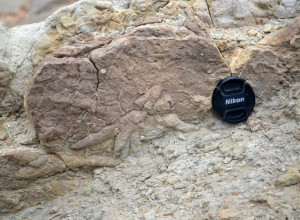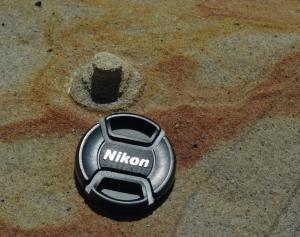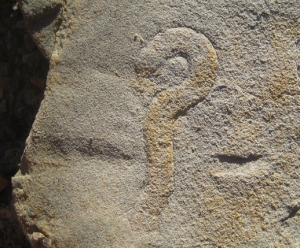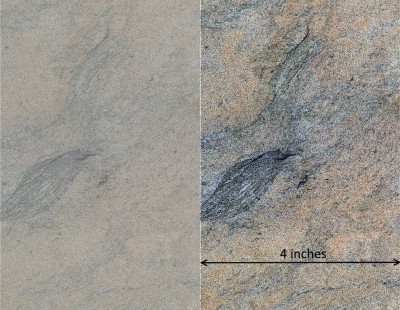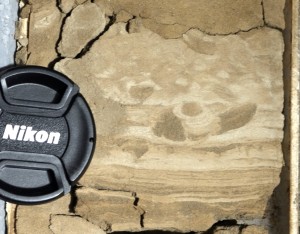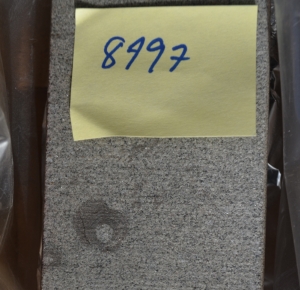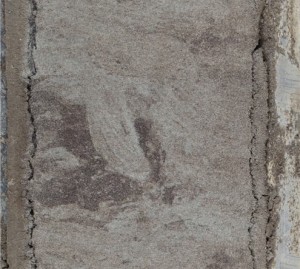Asterosoma
 Bulbous to elliptical burrow chambers that are arranged along a central axial tube, somewhat like seed pods attached to a vine. The burrow chambers contain a radial backfill, called menisci, that form as the organism presses material into the burrow walls, yet tries to maintain an open burrow chamber of constant diameter. Thus, concentric patterns are created, with outer menisci geting thinner as inner menisci are pressed against them.
Bulbous to elliptical burrow chambers that are arranged along a central axial tube, somewhat like seed pods attached to a vine. The burrow chambers contain a radial backfill, called menisci, that form as the organism presses material into the burrow walls, yet tries to maintain an open burrow chamber of constant diameter. Thus, concentric patterns are created, with outer menisci geting thinner as inner menisci are pressed against them.
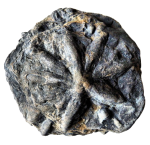 When viewed in cross-section Asterosoma is typically spherical to lens-shaped with concentric rings around a central sand-filled tube. However, the example on the right from the Miocene Monterey Formation at Chico-Martinez Creek has menisci of diatomite surrounding a central tube of diatomite. When viewed from above some varieties exhibit bulbous tubes radiating out from a central axis, like the spokes of a wagon wheel (see left), whereas other varieties have iregular burrow chambers strung out along a meandering axial tube. Examples that are based on drawings by Adolf Seilacher of some of these preservational forms are shown below.
When viewed in cross-section Asterosoma is typically spherical to lens-shaped with concentric rings around a central sand-filled tube. However, the example on the right from the Miocene Monterey Formation at Chico-Martinez Creek has menisci of diatomite surrounding a central tube of diatomite. When viewed from above some varieties exhibit bulbous tubes radiating out from a central axis, like the spokes of a wagon wheel (see left), whereas other varieties have iregular burrow chambers strung out along a meandering axial tube. Examples that are based on drawings by Adolf Seilacher of some of these preservational forms are shown below.
Some traces that are identified as Asterosoma may actually be redeposited Rosselia or Conichnus. The burrows are probably a combination of dwelling and feeding traces made by burrowing shrimp or other arthropods. This trace is most often found in fine-grained, shallow-marine sandstones, but it is found in lagoonal and turbidite sediments as well. And then again we have also identified this trace in diatomites of the Miocene Monterey Formation exposed at Chico-Martinez Creek, such as the example on the right, which when examined closely was clearly a burrow and not an odd expression of conchoidal fracture in a porcellenite.
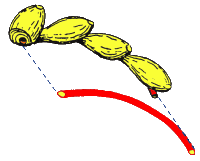

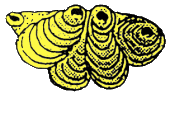
|






